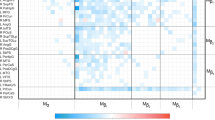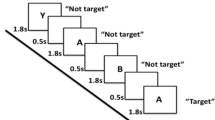Abstract
The pathophysiology underlying neurocognitive dysfunction following mild traumatic brain injury (TBI), or concussion, is poorly understood. In order to shed light on the effects of TBI at the functional network or modular level, our research groups are engaged in the acquisition and analysis of functional magnetic resonance imaging data from subjects post-TBI. Complementary to this effort, in this paper we use mathematical and computational techniques to determine how modular structure changes in response to specific mechanisms of injury. In particular, we examine in detail the potential effects of focal contusions, diffuse axonal degeneration and diffuse microlesions, illustrating the extent to which functional modules are preserved or degenerated by each type of injury. One striking prediction of our study is that the left and right hemispheres show a tendency to become functionally separated post-injury, but only in response to diffuse microlesions. We highlight other key differences among the effects of the three modelled injuries and discuss their clinical implications. These results may help delineate the functional mechanisms underlying several of the cognitive sequelae associated with TBI.







Similar content being viewed by others
References
Achard S, Salvador R, Whitcher B, Suckling J, Bullmore E (2006) A resilient, low-frequency, small-world human brain functional network with highly connected association cortical hubs. J Neurosci 26(1):63–72
Alexander-Bloch A, Gogtay N, Meunier D, Birn R, Clasen L, Lalonde F, Lenroot R, Giedd J, Bullmore E (2010) Disrupted modularity and local connectivity of brain functional networks in childhood-onset schizophrenia. Front Syst Neurosci 4(October):16
Aron AR, Durston S, Eagle DM, Logan GD, Stinear CM, Stuphorn V (2007) Converging evidence for a fronto-basal-ganglia network for inhibitory control of action and cognition. J Neurosci 27(44):11860–11864
Aron AR, Robbins TW, Poldrack RA (2004) Inhibition and the right inferior frontal cortex. Trends Cogn Sci 8:170–177
Bonnelle V, Ham T, Leech R, Kinnunen K, Mehta M, Greenwood R, Sharp D (2012) Salience network integrity predicts default mode network function after traumatic brain injury. Proc Natl Acad Sci USA 109(12):4690–4695
Bullmore E, Sporns O (2009) Complex brain networks: graph theoretical analysis of structural and functional systems. Nat Rev Neurosci 10(3):186–198
Clark L, Blackwell AD, Aron AR, Turner DC, Dowson J, Robbins TW, Sahakian BJ (2007) Association between response inhibition and working memory in adult ADHD: A link to right frontal cortex pathology? Biol Psychiat 61(12):1395–1401
Cox RW (1996) AFNI: software for analysis and visualization of functional magnetic resonance neuroimages. Comput Biomed Res 29(3):162–173
de Haan W, van der Flier W, Koene T, Smits L, Scheltens P, Stam C (2012) Disrupted modular brain dynamics reflect cognitive dysfunction in Alzheimer’s disease. NeuroImage 59(4):3085–3093
Eguíluz VM, Chialvo DR, Cecchi GA, Baliki M, Apkarian AV (2005) Scale-free brain functional networks. Phys Rev Lett 94(1):018102
Faul M, Xu L, Wald MM, Coronado VG (2010) Traumatic brain injury in the United States: emergency department visits, hospitalizations and deaths 2002–2006. Centers for Disease Control and Prevention, National Center for Injury Prevention and Control, Atlanta
Gallos LK, Sigman M, Makse HA (2012) The conundrum of functional brain networks: small-world efficiency or fractal modularity. Front Physiol 3:123
Greening SG, Finger EC, Mitchell DGV (2011) Parsing decision making processes in prefrontal cortex: response inhibition, overcoming learned avoidance, and reversal learning. NeuroImage 54(2):1432–1441
Hagmann P, Cammoun L, Gigandet X, Meuli R, Honey CJ, Wedeen VJ, Sporns O (2008) Mapping the structural core of human cerebral cortex. PLoS Biol 6(7):159
He Y, Wang J, Wang L, Chen ZJ, Yan C, Yang H, Tang H, Zhu C, Gong Q, Zang Y, Evans AC (2009) Uncovering intrinsic modular organization of spontaneous brain activity in humans. PLoS One 4(4):5226
Johnson V, Stewart W, Smith D (2012) Axonal pathology in traumatic brain injury. Exp Neurol 246:35–43
Joyce K, Laurienti P, Burdette J, Hayasaka S (2010) A new measure of centrality for brain networks. PLoS One 5(8):e12200
Kitzbichler MG, Henson RNA, Smith ML, Nathan PJ, Bullmore ET (2011) Cognitive effort drives workspace configuration of human brain functional networks. J Neurosci 31(22):8259–8270
Knight R, Staines W, Swick D, Chao L (1999) Prefrontal cortex regulates inhibition and excitation in distributed neural networks. Acta Psychol Amst 101(2–3):159–178
Langfelder P, Bin Z, Horvath S (2008) Defining clusters from a hierarchical cluster tree: the dynamic tree cut package for R. Bioinformatics 24(5):719–720
Langlois JA, Rutland-Brown W, Wald MM (2006) The epidemiology and impact of traumatic brain injury: a brief overview. J Head Trauma Rehabil 21(5):375–378
Levin HS, Mattis S, Ruff RM, Eisenberg HM, Marshall LF, Tabaddor K, High WM Jr, Frankowski RF (1987) Neurobehavioral outcome following minor head injury: a three-center study. J Neurosurg 66(2):234–243
Maruta J, Lee S, Jacobs E, Ghajar J (2010) A unified science of concussion. Ann NY Acad Sci 1208(1):58–66
Mattson AJ, Levin H (1990) Frontal lobe dysfunction following closed head injury. A review of the literature. J Nerv Ment Dis 178(5):282–291
Meunier D, Lambiotte R, Fornito A, Ersche KD, Bullmore ET (2009) Hierarchical modularity in human brain functional networks. Front Neuroinf 3:37
Mitchell D (2011) The nexus between decision making and emotion regulation: a review of convergent neurocognitive substrates. Behav Brain Res 217(1):215–231
Moussa MN, Steen MR, Laurienti PJ, Hayasaka S (2012) Consistency of network modules in resting-state fMRI connectome data. PLoS One 7(8):44428
R Development Core Team (2008) R: A language and environment for statistical computing. R Foundation for Statistical Computing, Vienna, Austria. ISBN 3-900051-07-0
Raichle ME, MacLeod AM, Snyder AZ, Powers WJ, Gusnard DA, Shulman GL (2001) A default mode of brain function. Proc Natl Acad Sci USA 98(2):676–682
Ravasz E, Somera A, Mongru D, Oltvai Z, Barabási A (2002) Hierarchical organization of modularity in metabolic networks. Science 297(5586):1551
Roberts AC (2006) Primate orbitofrontal cortex and adaptive behaviour. Trends Cogn Sci 10(2):83–90
Song J, Birn RM, Boly M, Meier TB, Nair VA, Meyerand ME, Prabhakaran V (2014) Age-related reorganizational changes in modularity and functional connectivity of human brain networks. Brain Connect 4(9):662–676
Tagliazucchi E, Von Wegner F, Morzelewski A, Brodbeck V, Borisov S, Jahnke K, Laufs H (2013) Large-scale brain functional modularity is reflected in slow electroencephalographic rhythms across the human non-rapid eye movement sleep cycle. Neuroimage 70:327–339
Talairach J, Tournoux P (1988) Co-planar stereotaxic atlas of the human brain: 3-D proportional system—an approach to cerebral imaging. Thieme Medical Publishers, Stuttgart, New York
Uehara T, Yamasaki T, Okamoto T, Koike T, Kan S, Miyauchi S, Kira J-I, Tobimatsu S (2014) Efficiency of a small-world brain network depends on consciousness level: a resting-state fmri study. Cereb Cortex 24(6):1529–1539
Vargas ER, Mitchell D, Greening S, Wahl L (2014) Topology of whole-brain functional MRI networks: improving the truncated scale-free model. Phys A 405:151–158
Wang J, Zuo X, Dai Z, Xia M, Zhao Z, Zhao X, Jia J, Han Y, He Y (2013) Disrupted functional brain connectome in individuals at risk for alzheimer’s disease. Biol Psychiatry 73(5):472–481
Wang J, Zuo X, He Y (2010) Graph-based network analysis of resting-state functional MRI. Front Syst Neurosci 4:16
Zhang B, Horvath S (2005) A general framework for weighted gene co-expression network analysis. Stat Appl Genet Mol Biol 4(1):17
Acknowledgments
This work was funded by a CONACYT grant (ERV), NSERC grant (Discovery Grant to LMW, and Discovery Grant to DGM) and the Canada Research Chairs program (LMW). The authors would like to thank Michael Radford for assisting in data preparation.
Author information
Authors and Affiliations
Corresponding author
Rights and permissions
About this article
Cite this article
Ruiz Vargas, E., Mitchell, D.G.V., Greening, S.G. et al. Network analysis of human fMRI data suggests modular restructuring after simulated acquired brain injury. Med Biol Eng Comput 54, 235–248 (2016). https://doi.org/10.1007/s11517-015-1396-2
Received:
Accepted:
Published:
Issue Date:
DOI: https://doi.org/10.1007/s11517-015-1396-2




